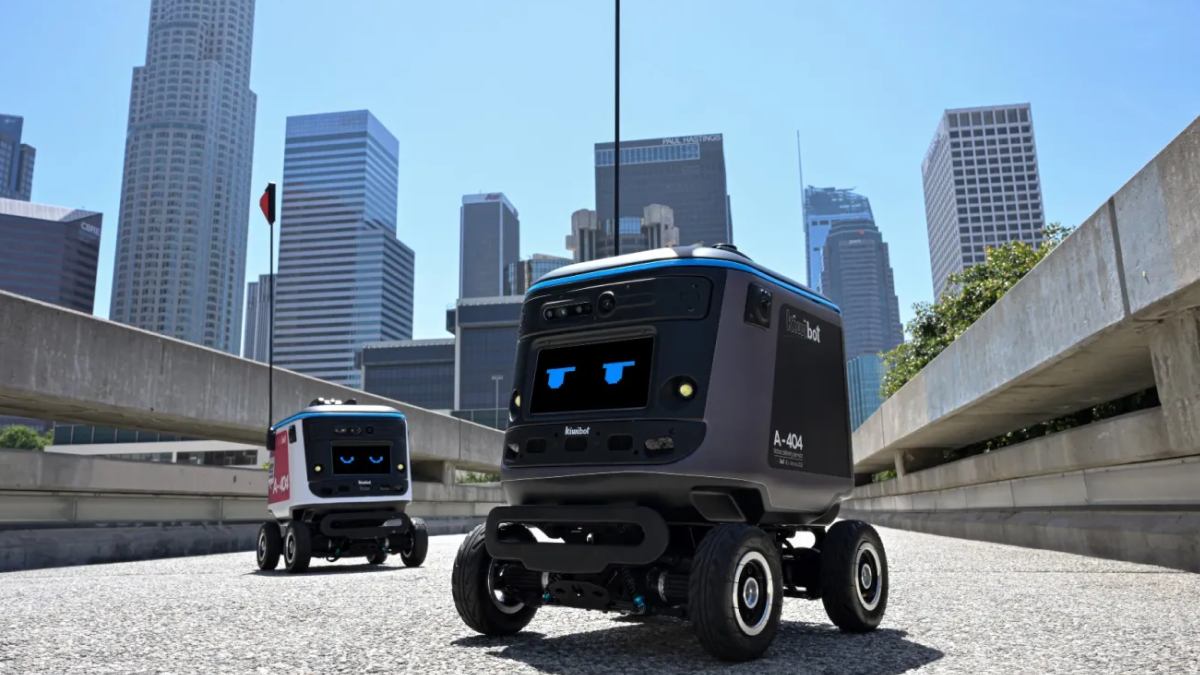Your Next Online Order Can Be Delivered By a Robot
The most costly and labor-intensive part of package transportation is the “last mile.” Businesses are scrambling to put delivery robots in place that can handle this difficulty.A delivery robot transports a payload from one location to another. In other instances, the robot will move only inside a building, using the escalators and hallways. In other instances, the robot will leave the building and deliver its packages to clients’ homes or places of business.
In this article, we will take a look at how Uber Eats is leveraging the use of AI robot deliveries, its benefits, and the data annotation required to make sure the robot can navigate in its surroundings.
The Rise of Food Delivery Robots

In May of 2023, Uber Eats rolled out two test programs to deliver food in the greater Los Angeles area. These programs will use self-driving cars for longer excursions as well as four-wheeled robots that roll down sidewalks for shorter trips.
Customers of Uber Eats will have the opportunity to choose a robot delivery option starting on Monday in place of conventional human delivery. Customers will find instructions on how to retrieve their food from the robot inside the Uber app. The Serve robot has a lid that opens to show a delivery inside and is shaped like a vibrant cooler on wheels. The robot will operate in West Hollywood, and it has headlights that resemble eyes, giving it a cartoonish appearance.
Another interesting part of this project is that Hyundai sedans with self-driving technology from the company Motional will handle larger orders in Santa Monica, California. The alliance was initially declared in December. Orders delivered by the self-driving car will be kept in a thermal container and retrieved by the customer from the rear seat. As a safety measure, Motional will have a human test driver behind the wheel. Deliveries will be supervised by a remote human operator through Serve Robotics, the company that runs Uber’s sidewalk robots.
What are the Benefits of Robot Deliveries?

One of the main benefits of using AI robots for last-mile deliveries is the affordability it offers. When consumers buy something online, such as groceries or items from an eCommerce website, the store will need to charge customers for the last-mile delivery or pay for it themselves. These costs can really add up. As a result, same-day deliveries, inherently short-distance deliveries, are extremely costly. Delivery robots offer a convenient alternative to human-centered deliveries at a fraction of the cost.
Another big benefit is the environmental aspect. Using courier services, like FedEx or UPS, requires them to drive big trucks from one destination to another, and these vehicles are not environmentally friendly. On the other hand, using delivery robots for last-mile delivery would be much more effective and environmentally benign. Delivery robots may lessen the number of large delivery vehicles that must double park, reducing the amount of time they are on the road and the amount of greenhouse gasses they emit.
What Types of Data Annotation are Needed to Train AI Delivery Robots?
Since the delivery robots will need to navigate their surroundings, LiDAR or computer vision cameras will need to be used. If we look at LiDAR first, this creates a 3D Point Cloud, which is a digital representation of how the robot sees the physical world. This 3D Point Cloud will need to be annotated with methods like 3D boxes so the system can identify things like vehicles, vulnerable road users, traffic signs, traffic lights, etc. Semantic segmentation will also be needed, which is an AI model that can learn how to identify individual objects and classes within an image by manually labeling each pixel. It helps an AI model to recognize objects and better understand the context of an image.
If computer vision cameras are used, various types of image annotation will need to be used, such as image classification, which identifies the presence of similar objects depicted in images across an entire dataset. Instance segmentation may need to be done since it tracks and counts the presence, location, count, size, and shape of objects in an image.
Trust Mindy Support With All of Your Data Annotation Needs
Mindy Support is a global provider of data annotation services and is trusted by Fortune 500 and GAFAM companies. With more than ten years of experience under our belt and offices and representatives in Cyprus, Poland, Romania, The Netherlands, India, OAE, and Ukraine, Mindy Support’s team now stands strong with 2000+ professionals helping companies with their most advanced data annotation challenges.





